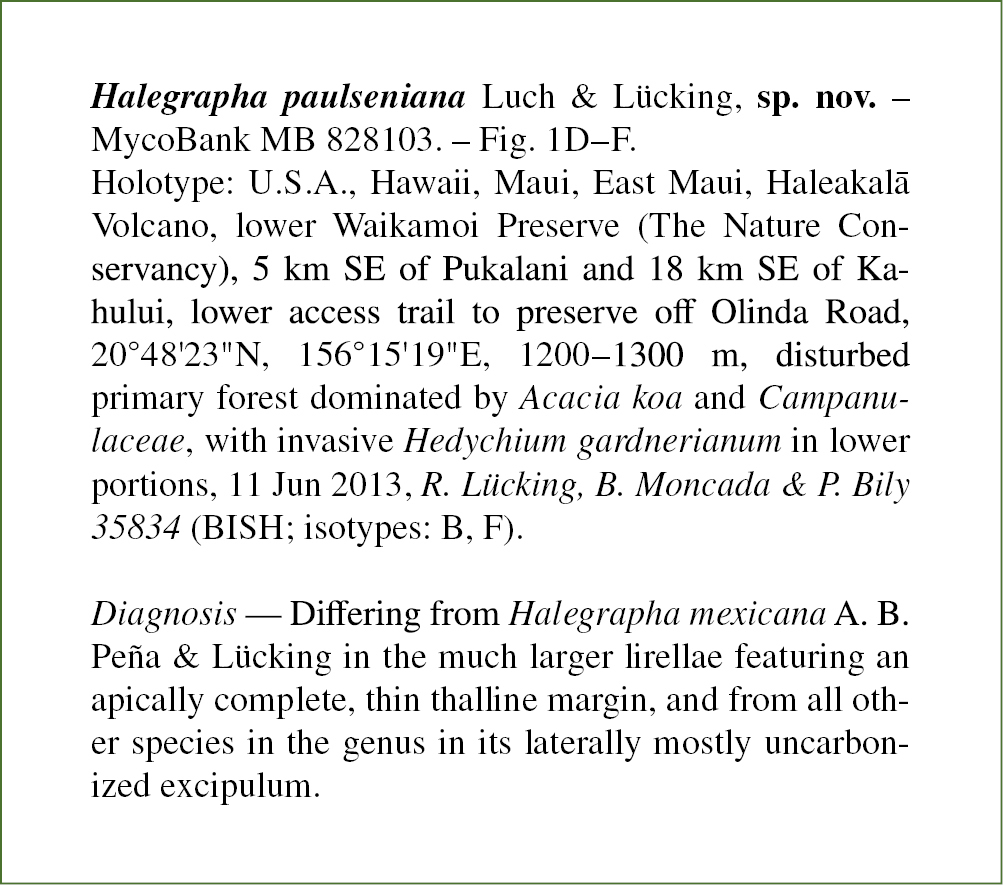
|
||
|
A modern protologue of the name of a new fungal taxon: Halegrapha paulseniana Luch & Lücking, from a paper in volume 48 of the journal Willdenowia by Luch & Lücking (2018: 416). Reproduced by permission of the authors and the Botanischer Garten und Botanisches Museum Berlin. Components of the protologue are as follows: Name cited in full (generic name not abbreviated), authorship explicitly cited, and novel status indicated (“sp. nov.”); all three items are best practice and should certainly be followed (even if strictly they are not requirements for valid publication under the Code).Citation of the identifier issued for the name by a recognized repository (“MycoBank MB 828103”), as required for new names of fungi published from 2013 onward (Art. F.5.1).Citation of type (Art. 40.1), which is a specimen (R. Lücking, B. Moncada & P. Bily 35834; Art. 40.4), using one of the words “typus” or “holotypus”, its abbreviation, or its modern-language equivalent (here in English, “holotype”; Art. 40.6), specifying the single herbarium where it is conserved (BISH; Art. 40.7), and citing two duplicates, i.e. isotypes, in the herbaria B and F. Additional collecting details of the type are also cited (locality with coordinates, altitude, habitat, and date).Latin or English validating description or diagnosis (here an English diagnosis; also an English description, not shown in this figure), as required for names published from 2012 onward (Art. 39.2).Also provided, but not shown in this figure, are remarks on the new species, including distribution, ecology, derivation of the specific epithet, and comparison with other taxa, as well as illustrations of the organism and its habitat. |